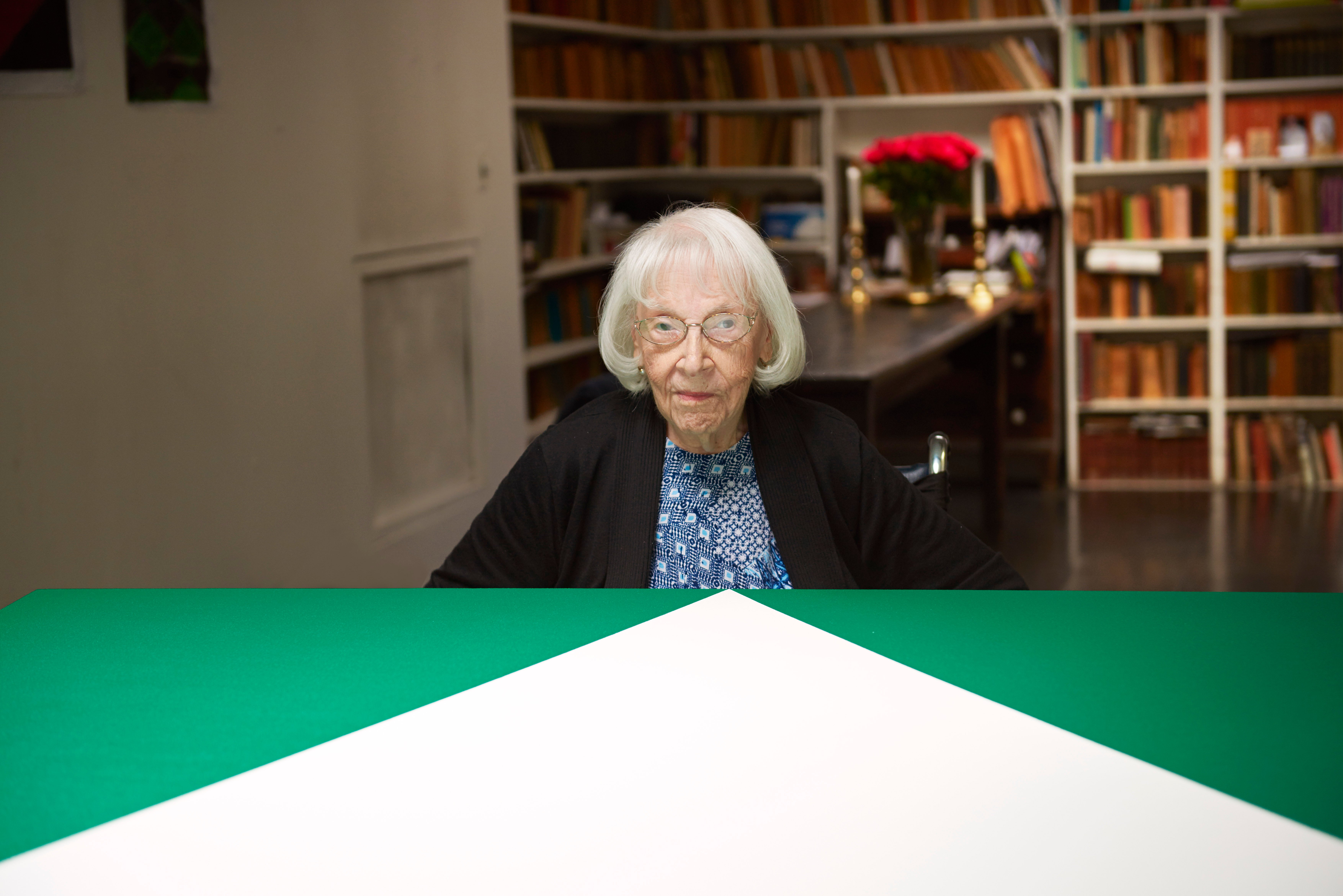
Carmen Herrera, the Cuban American painter and sculptor whose lifelong interest in vividly colored, hard-edge abstract forms brought her particular fame in the latter years of her life, died on Saturday in the New York apartment and studio where she lived for 55 years. She was 106.
The news was confirmed by Lisson Gallery, which began representing the artist in 2010.
Herrera was preparing for several upcoming projects this year, including a ballet with Wayne McGregor at the Royal Opera House in London and a show at Lisson Gallery in New York, scheduled to open in May, just ahead of what would have been her 107th birthday. Another show is scheduled to inaugurate Lisson’s Los Angeles space in the fall.
“Carmen made works that are alive and in constant flux,” Alex Logsdail, CEO of Lisson, said in a statement. “Even when she seemed to have reached an apotheosis or a summit, she kept looking over the edge.”
Herrera was born in 1915 and grew up in Havana. She traveled to Paris, Rome, and Berlin before returning to Cuba to study architecture at La Universidad de la Habana, where she met her husband, Jesse Loewenthal, between 1938 and 1939.
Carmen Herrera and Jesse Loewenthal in Paris, around 1948–53. ©Carmen Herrera, Courtesy Lisson Gallery
“I was familiar with the work of [architect Oscar] Niemeyer and had seen magazines about the Bauhaus. All modern architecture was interesting to me. I loved spaces, shapes and lines,” Herrera told Artnet News in an interview in 2016.
But in the wake of Cuba’s political turmoil, she left the country with Loewenthal for New York in 1939 and never completed her studies. The pair later spent the years 1948 to 1954 in Paris.
Herrera began developing hard-edged paintings of geometric shapes while in France, exhibiting at the Salon des Réalités Nouvelles, the venue that played an instrumental role in driving the development of abstract art in the Postwar era.
“I was in Paris when I painted Iberia in 1948,” she told Artnet News. “That city was an amalgamation of the world’s artists in those days. The spirit and challenge of the new and the daring was stimulating. I always appreciated and liked [Lygia] Pape and Lygia [Clark] and later [Hélio] Oiticica and others I cannot today remember. But we all had similar sources in the Suprematists and the Dutch.”
She continued developing her style upon returning to New York in 1954, befriending abstract artists including Mark Rothko, Ad Reinhardt, and Barnett Newman.
Carmen Herrera, Green and Orange (1958). Cejas Art Ltd. Paul and Trudy Cejas © Carmen Herrera
Although Herrera sold no works for much of her lifetime, and lived through the support of her husband, an English teacher at Stuyvesant High School in Manhattan, she continued to hone her craft, exhibiting at the Alternative Museum in the East Village and El Museo del Barrio in East Harlem.
“I was liberated by being ignored,” she said. “I was free to do as I wished. Frankly, it never bothered me that much. It just was not my time, I guess.”
A major opportunity came in 2004 when she was 89, after she showed work at Frederico Sève’s Latin Collector Gallery on Hudson Street.
Rave reviews led to the first sales of her paintings to private collectors, followed by institutional acquisitions by MoMA, the Hirshhorn Museum in Washington, and Tate Modern in London. In May 2016, she opened Lisson’s New York space with new works, and had a 30-year retrospective at the Whitney Museum that September.
The forthcoming exhibition at Lisson Gallery in May in will focus on Herrera’s work from the 1970s, while the Los Angeles show will focus on her “Days of the Week” series, an ensemble of seven paintings that was exhibited at the Whitney exhibition in 2016.
Carmen Herrera in her studio, 2015. Photo by Jason Schmidt. © Carmen Herrera, courtesy Lisson Gallery.